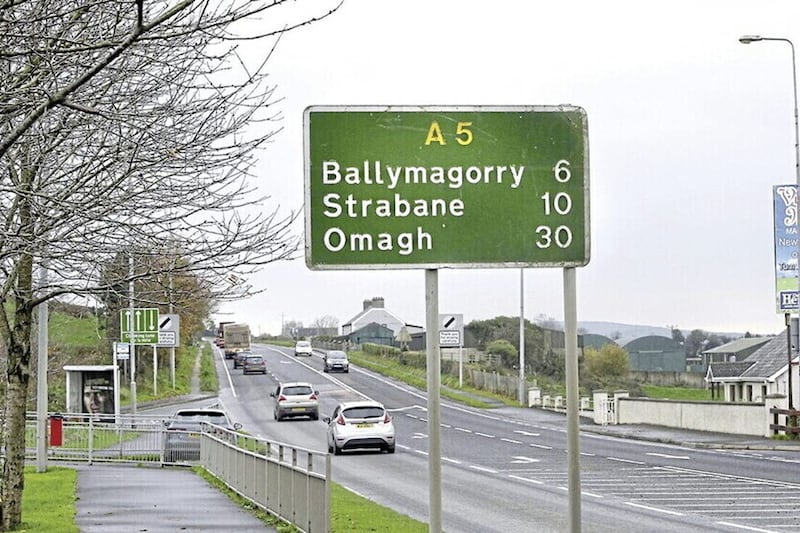There is growing concern over the future of the A5 road from Newbuildings to Strabane following warnings that, in its current design, it could lead to serious flooding along the banks of the Foyle.
Politicians have urged Infrastructure Minister John O’Dowd to provide a timescale for the completion of the road.
The SDLP and DUP raised fears after the Planning Appeals Commission (PAC) highlighted the possibility that in its current design, the Newbuildings stretch could cause serious flooding in “hundreds of properties”.
A spokeswoman for the Department for Infrastructure said the minister remained confident that issues raised by the PAC could be resolved and he did not see any reason to delay progress.
First approved by the Stormont Executive in 2007, the A5 scheme was designed to convert the existing road between Derry and the border at Aughnacloy to a dual carriageway. However, construction has been repeatedly delayed through legal challenges and funding issues.
Campaigners believe the upgrading of the A5 road would greatly improve safety on the Derry to Aughnacloy road where there have been 57 deaths since 2006.
Mr O’Dowd announced on Wednesday work would begin on the first 34-mile stretch of the road, from Strabane to Ballygawley early in 2025.
The minister said: “This is in line with the PAC (Planning Appeals Commission) recommendation that this section should proceed in the wider pubic interest.”
While campaigners welcomed the announcement, Northern Ireland roads’ expert Wesley Johnson highlighted recent PAC concerns over the Newbuildings stretch.
In a response to a 2023 public inquiry into the road, the PAC said: “We have concluded that Section 1 of the scheme (Newbuildings to south of Strabane) as currently designed would have an unacceptable effect on flood risk in the Foyle river system.
“Hundreds of properties in Lifford and adjacent parts of County Donegal would be among those adversely affected.”
The PAC suggested that the problem could be dealt with through “closer engagement” between the Stormont executive and the Dublin government on the issue.
Political leaders in the north-west called on the minister to immediately provide clarification on future plans for the Newbuildings stretch of the A5 road.
SDLP assembly member Mark H Durkan said it appeared that a scheme designed to provide greater connectivity for Derry would not do so. He said he feared the A5 upgrade would end at Strabane.
The MLA said the problem echoed the A6 scheme to Dungiven which was originally meant to end closer to Derry but now stopped at Drumahoe.
“It appears all roads lead to Derry but none of them actually reach Derry,” Mr Durkan said.
DUP assembly member Gary Middleton also called for clarity saying the current design of the Newbuildings section raised “concerns of flooding in both jurisdictions”.
“The minister has suggested it could take five years to complete the Strabane to Ballygawley section. I would be worried that work on the Newbuildings to Strabane section would be put on the long finger for five years,” he said.
Mr Middleton said that through his work with the “Life After” road safety charity, he was very conscious of the impact of any delay on families of people killed on the A5.
DfI acknowledged the PAC concerns over “the potential increased flooding risk in the Foyle River basin”.
A department spokesperson said: “Work is ongoing to consider and address the PAC recommendations. The minister is confident that the issued raised by the PAC can be resolved in due course, in line with his statutory obligations, and did not see a reason to delay progress in other parts of the scheme.”








